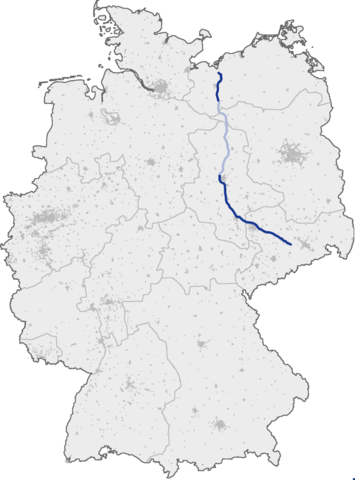- Engine: 4.0-liter V8
- Power: 503 hp
- Acceleration: 0-100 km/h in 3.6s
- Top Speed: 314 km/h
Autobahn in Germany Map
Autobahn in Germany Map: Navigating Germany’s High-Speed Highway System

The Autobahn in Germany Map is a vital tool for understanding the expansive network of high-speed roads that traverse the country. With over 12,000 kilometers of interconnected routes, the Autobahn offers one of the most efficient and thrilling driving experiences in the world. Understanding the layout and key routes on this map can enhance your travel experience and help you navigate the German highways with ease.
The Autobahn in Germany Map reveals both the roads with no speed limits and those where specific restrictions apply. While some areas allow unrestricted speeds, others have recommended limits of 130 km/h (81 mph). Knowing where these key zones are located on the map is essential for safe and efficient driving, as some stretches of road can change speed limits due to traffic or weather conditions.
Ready to experience no speed limits?
Rent your autobahn-ready supercar for the ultimate experience now with DRIVAR!
How to Read the Autobahn in Germany Map and What to Know
Using the Autobahn in Germany Map effectively means understanding its signs and symbols. This map includes details such as lane restrictions, fuel stations, rest stops, and high-speed zones. When planning a trip, you can also find the best routes connecting major cities like Munich, Frankfurt, and Berlin. These maps also highlight major junctions and intersections, helping drivers avoid traffic bottlenecks and optimize their travel times.
The Autobahn in Germany Map can help you plan an unforgettable road trip. For example, a drive from Berlin to Munich on the Autobahn lets you experience the best of the highway system as you travel through both rural landscapes and vibrant cities. Other iconic routes, such as Frankfurt to Hamburg, provide picturesque views and the opportunity to explore Germany’s diverse regions, all accessible via the Autobahn.

Autobahn A10
- Length: 196 km (121 miles)
- Established: 1971
- Start Point: Junction with A2 (near Werder) to the west of Berlin.
- Passing: Brandenburg, Potsdam, and several towns surrounding Berlin.
- End Point: Junction with A13 and A12 near the southeast of Berlin.

Autobahn A11
- Length: 150 km (93 miles)
- Established: 1967
- Start Point: Junction with A10 (Berliner Ring) near Berlin.
- Passing: Brandenburg, Barnim district.
- End Point: Junction with A2 near the Polish border at Schwedt.

Autobahn A12
- Length: 155 km (96 miles)
- Established: 1990
- Start Point: Junction with A10 near Berlin.
- Passing: Brandenburg, Spreewald.
- End Point: Junction with A4 at the Polish border near Frankfurt (Oder).

Autobahn A13
- Length: 134 km (83 miles)
- Established: 1990
- Start Point: Junction with A10 (Berliner Ring) near the southeast of Berlin.
- Passing: Brandenburg, Cottbus, and Dresden.
- End Point: Junction with A4 near the Polish border.

Autobahn A14
- Length: 211 km (131 miles)
- Established: 1994
- Start Point: Junction with A9 near Halle.
- Passing: Saxony-Anhalt, Saxony, and the city of Leipzig.

Autobahn A15
- Length: 92 km (57 miles)
- Established: 2000
- Start Point: Junction with A10 near Berlin.
- Passing: Brandenburg, and part of the Lausitz region.
- End Point: Junction with A4 near Görlitz at the Polish border.
Autobahn in Germany Map: Key Safety Tips and Regulations
The Autobahn in Germany not only helps you navigate the roads but also ensures you follow essential safety guidelines. Understanding the map fully can assist you in locating key safety features such as rest stops, emergency assistance points, and areas with specific regulations that are crucial for a safe journey. Here’s how to use the Autobahn in Germany effectively to ensure your trip is both enjoyable and safe.
1. Rest Stops and Emergency Assistance Locations
The Autobahn is known for its efficiency and high-speed lanes, but it’s equally important to know where you can stop for a break. The Autobahn in Germany Map clearly indicates the locations of rest stops and emergency assistance points, which are vital during long journeys. These areas provide essential services, including fuel stations, restaurants, restrooms, and sometimes even mechanics or emergency help. By identifying these spots on the map, you can ensure that you stay refreshed, well-rested, and ready for the road ahead.
In case of a breakdown or an emergency, the map highlights emergency service areas, so you can quickly locate assistance. These areas are equipped with safety protocols to help you in case of mechanical failures, accidents, or sudden medical issues.
2. Adhering to Speed Limits and Zones with Restrictions
While the Autobahn is famous for its stretches with no speed limits, there are specific speed zones where limits are enforced for safety. The Autobahn in Germany Map marks these speed zones, which are typically near urban areas, construction zones, or locations where the weather can impact driving conditions. Some stretches might recommend a speed of 130 km/h (81 mph) or have temporary restrictions depending on factors like traffic, weather, or accidents.

Best Car Choices for Driving the Autobahn: Germany’s High-Speed Roads

DRIVAR turns your fantasies of owning a supercar into a reality. As a leading service for renting luxury and sports cars, DRIVAR offers you the chance to use a select group of top-notch vehicles throughout Germany. Whether you’re looking for a thrilling ride or a comfortable, stylish journey, every car in DRIVAR’s collection is carefully looked after and prepared for the open stretches of the Autobahn.
The Autobahn’s sleek, well-preserved highways and stunning views make it the perfect spot for car lovers. With DRIVAR, you’re free to explore the capabilities of these vehicles, turning a simple drive into an exhilarating journey packed with memorable experiences.
Our Premium Fleet for the Autobahn Experience
- Engine: 4.0-liter
- Power: 502 hp
- Acceleration: 0-100 km/h in 3.4 s
- Top Speed: 320 km/h
- Engine: 4.0-liter
- Power: 577 hp
- Acceleration: 0-100 km/h in 3.5s
- Top Speed: 315 km/h
- Engine: 3.9-liter
- Power: 710 hp
- Acceleration: 0-100 km/h in 2.9 s
- Top Speed: 340 km/h
- Engine: 3.0-liter
- Power: 503 hp
- Acceleration: 0-100 km/h in 3.8s
- Top Speed: 290 km/h
- Engine: 5.0-liter V8
- Power: 450 hp
- Acceleration: 0-100 km/h in 4.3s
- Top Speed: 250 km/h
- Engine: 6.5-liter V12
- Power: 770 hp
- Acceleration: 0-100 km/h in 2.9s
- Top Speed: 350 km/h
Autobahn in Germany Map Conclusion
The Autobahn not only helps you navigate the roads but also ensures you follow essential safety guidelines. Knowing the locations of rest stops is crucial. While the Autobahn is one of the safest road systems in the world, adhering to speed limits and maintaining your vehicle’s performance are key to having a safe journey. If you’re renting a car, ensure it’s in good condition and suited for high-speed travel.
Autobahn is your ultimate guide to exploring Germany’s fast, efficient highway system. Whether you’re driving a high-performance sports car, a comfortable sedan, or an electric vehicle, renting a car for your Autobahn Road trip offers unparalleled freedom. With the Autobahn map at your fingertips, you can easily navigate the highways and enjoy the unique experience of driving on roads with no speed limits.
People Also Asked
How do I know if I'm on the autobahn?
Road Signs are the most noticeable sign is a blue highway sign with a white car symbol, often with a “BAB” label, which stands for Bundesautobahn. This indicates you’re on an official Autobahn.
Can you actually go as fast as you want on the autobahn?
On the Autobahn, you can technically drive as fast as you want on sections that have no speed limit, which is one of the unique features of Germany’s highway system. However, this freedom comes with the responsibility of driving safely and maintaining control of your vehicle, especially since there is an advisory speed limit of 130 km/h (81 mph), although it’s not mandatory.
What is the longest stretch of the autobahn without speed limit?
The German Autobahn network is renowned for sections without enforced speed limits. The longest continuous stretch without a speed limit is on the A24 Autobahn, connecting Hamburg and Berlin. This approximately 150-kilometer (93-mile) segment allows drivers to travel at high speeds without specific restrictions.









